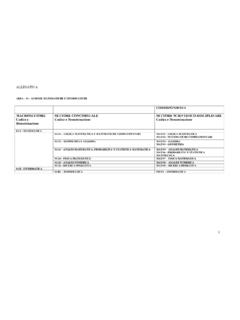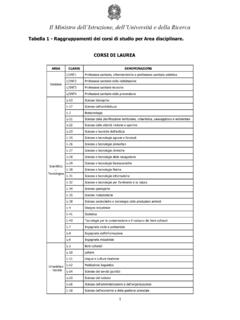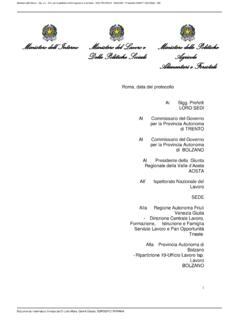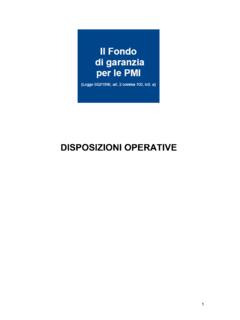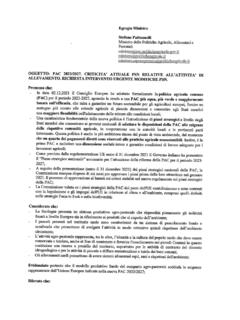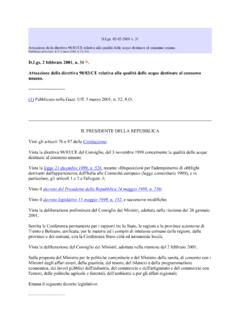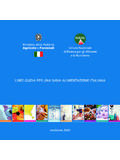Transcription of Global Forest Resources Assessment 2020
1 GlobalForestResourcesAssessment2020 Key findingsRequired citation: FAO. 2020. Global Forest Resources Assessment 2020 Key findings. Rome. designations employed and the presentation of material in this information product do not imply the expression of any opinion whatsoever on the part of the Food and Agriculture Organization of the United Nations (FAO) concerning the legal or development status of any country, territory, city or area or of its authorities, or concerning the delimitation of its frontiers or boundaries. The mention of specific companies or products of manufacturers, whether or not these have been patented, does not imply that these have been endorsed or recommended by FAO in preference to others of a similar nature that are not views expressed in this information product are those of the author(s) and do not necessarily reflect the views or policies of FAO. FAO, 2020 Some rights reserved. This work is made available under the Creative Commons Attribution-NonCommercial-ShareAlike IGO licence (CC BY-NC-SA IGO; ).
2 Under the terms of this licence, this work may be copied, redistributed and adapted for non-commercial purposes, provided that the work is appropriately cited. In any use of this work, there should be no suggestion that FAO endorses any specific organization, products or services. The use of the FAO logo is not permitted. If the work is adapted, then it must be licensed under the same or equivalent Creative Commons licence. If a translation of this work is created, it must include the following disclaimer along with the required citation: This translation was not created by the Food and Agriculture Organization of the United Nations (FAO). FAO is not responsible for the content or accuracy of this translation. The original [Language] edition shall be the authoritative edition. Disputes arising under the licence that cannot be settled amicably will be resolved by mediation and arbitration as described in Article 8 of the licence except as otherwise provided herein.
3 The applicable mediation rules will be the mediation rules of the World Intellectual Property Organization and any arbitration will be conducted in accordance with the Arbitration Rules of the United Nations Commission on International Trade Law (UNCITRAL).Third-party materials. Users wishing to reuse material from this work that is attributed to a third party, such as tables, figures or images, are responsible for determining whether permission is needed for that reuse and for obtaining permission from the copyright holder. The risk of claims resulting from infringement of any third-party-owned component in the work rests solely with the , rights and licensing. FAO information products are available on the FAO website ( ) and can be purchased through Requests for commercial use should be submitted via: Queries regarding rights and licensing should be submitted to: publication contains the main findings of the Global Forest Resources Assessment 2020 (FRA 2020).
4 The data in FRA 2020 the backbone of the Assessment have been obtained through a transparent, traceable reporting process and a well-established network of officially nominated national correspondents. The application of a standardized reporting methodology enables the monitoring of change over time in parameters such as Forest area, management, ownership and use and the aggregation of data at the regional and Global levels. The information provided by FRA presents a comprehensive view of the world s forests and the ways in which the resource is changing. Such a clear Global picture supports the development of sound policies, practices and investments affecting forests and forestry. FRA is the mechanism for collecting data on two Forest -related indicators of the Sustainable Development Goals (SDGs), which the United Nations General Assembly adopted in 2015. Specifically, data submitted to FRA contribute to reporting on SDG indicator ( Forest area as a proportion of total land area in 2015) and indicator (progress towards sustainable Forest management).
5 1 Global Forest Resources Assessment 2020 Key findingsForests cover nearlyone-third of the land globally The world has a total Forest area of billion hectares (ha), which is 31 percent of the total land area. This area is equivalent to ha per person1 although forests are not distributed equally among the world s peoples or geographically. The tropical domain has the largest proportion of the world s forests (45 percent), followed by the boreal, temperate and subtropical than half (54 percent) of the world s forests is in only five countries the Russian Federation, Brazil, Canada, the United States of America and China. 1 Calculated assuming a Global population of billion people, as estimated in United Nations, Department of Economic and Social Affairs, Population Division. 2019. World Population Prospects 2019, Online ofAmerica310 China220 Rest ofthe world1 870 Boreal27%Temperate16%Tropical45%Subtropi cal11%Proportion and distribution of Global Forest area by climatic domain, 2020 Top five countries for Forest area, 2020 (million ha)201298546 Canada347%RussianFederation815 Brazil497 UnitedStates ofAmerica310 China220 Rest ofthe world1 870 Boreal27%Temperate16%Tropical45%Subtropi cal11%Proportion and distribution of Global Forest area by climatic domain, 2020 Top five countries for Forest area, 2020 (million ha)201298546 Canada347 Source: Adapted from United Nations World map, Global Forest Resources Assessment 2020 Key findingsThe world s Forest area is decreasing,but the rate of loss has slowed The world has lost 178 million ha of Forest since 1990, which is an area about the size of Libya.
6 The rate of net Forest loss decreased substantially over the period 1990 2020 due to a reduction in deforestation in some countries, plus increases in Forest area in others through afforestation and the natural expansion of forests. The rate of net Forest loss declined from million ha per year in the decade 1990 2000 to million ha per year in 2000 2010 and million haper year in 2010 2020. The rate of decline of net Forest loss slowed in the most recent decade due to a reduction in the rate of Forest defines deforestation as the conversion of Forest to other land uses (regardless of whether it is human-induced). Deforestation and Forest area net change are not the same: the latter is the sum of all Forest losses (deforestation) and all Forest gains ( Forest expansion) in a given period. Net change, therefore, can be positive or negative, depending on whether gains exceed losses, or vice versa. Annual Forest area net change, by decade and region, 1990 20203210-1-2-3-4-5-6-7-8 Million ha per year3210-1-2-3-4-5-6-7-8 Million ha per year1990 20002000 20102010 2020 Asia1990 20002000 20102010 2020 OceaniaEuropeNorth and Central AmericaSouth AmericaAfricaGlobal annual Forest area net change,by decade, 1990 Global Forest Resources Assessment 2020 Key findingsAfrica has the highest net loss of Forest area Africa had the largest annual rate of net Forest loss in 2010 2020, at million ha, followed by South America, at million ha.
7 The rate of net Forest loss has increased in Africa in each of the three decades since 1990. It has declined substantially in South America, however, to about half the rate in 2010 2020 compared with 2000 had the highest net gain of Forest area in 2010 2020, followed by Oceania and Nevertheless, both Europe and Asia recorded substantially lower rates of net gain in 2010 2020 than in 2000 2010. Oceania experienced net losses of Forest area in the decades 1990 2000 and 2000 2010. 2 According to the regional breakdown used in FRA 2020, Europe includes the Russian Forest area net change, by decade and region, 1990 20203210-1-2-3-4-5-6-7-8 Million ha per year3210-1-2-3-4-5-6-7-8 Million ha per year1990 20002000 20102010 2020 Asia1990 20002000 20102010 2020 OceaniaEuropeNorth and Central AmericaSouth AmericaAfricaGlobal annual Forest area net change,by decade, 1990 Global Forest Resources Assessment 2020 Key findingsDeforestation continues, but at a lower rate An estimated 420 million ha of Forest has been lost worldwide through deforestation since 1990, but the rate of Forest loss has declined substantially.
8 In the most recent five-year period (2015 2020), the annual rate of deforestation was estimated at 10 million ha, down from 12 million ha in 2010 2015. Annual rate of Forest expansion and deforestation, 1990 2020 Million ha per year1990 20002000 20102010 20152015 2020151050-5-10-15-20 Forest expansionDeforestation8-1610-157-125-10 More than 90 percent of the world s forestshave regenerated naturally Ninety-three percent ( billion ha) of the Forest area worldwide is composed of naturally regenerating forests and 7 percent (290 million ha) is planted. The area of naturally regenerating forests has decreased since 1990 (at a declining rate of loss), but the area of planted forests has increased by 123 million ha. The rate of increase in the area of planted Forest has slowed in the last ten years. 5 Global Forest Resources Assessment 2020 Key findingsPlantations account forabout 3 percent of the world s forests Plantation forests cover about 131 million ha, which is 3 percent of the Global Forest area and 45 percent of the total area of planted forests.
9 Plantation forests are intensively managed, composed of one or two species, even-aged, planted with regular spacing, and established mainly for productive purposes. Other planted forests, which comprise 55 percent of all planted forests, are not intensively managed, and they may resemble natural forests at stand maturity. The purposes of other planted forests may include ecosystem restoration and the protection of soil and water regeneratingforest3 Plantation forestOther planted forestNaturally regenerating versus planted forests, 2020 (% of Global Forest area)4 Million ha per year6420-2-4-6-8-10-12-141990 20002000 20102010 2020 Naturally regenerating forestPlanted forestAnnual net change in area of naturally regenerating and planted Forest , by decade, 1990 2020453-12-10-86 Global Forest Resources Assessment 2020 Key findingsThe highest share of plantation Forest is in South America, where this Forest type represents 99 percent of the total planted- Forest area and 2 percent of the total Forest area.
10 The lowest share of plantation Forest is in Europe, where it represents 6 percent of the planted Forest estate and percent of the total Forest area. Globally, 44 percent of plantation forests are composed mainly of introduced species. There are large differences between regions: for example, plantation forests in North and Central America mostly comprise native species and those in South America consist almost entirely of introduced species. Proportion of introduced and native species in plantation Forest , by region, 2020 Introduced speciesNative species01020304050%60708090100 AfricaAsiaEuropeNorth and Central AmericaOceaniaSouth AmericaWorld7 Global Forest Resources Assessment 2020 Key findingsMore than 700 million ha of Forest is in legally established protected areas There is an estimated 726 million ha of Forest in protected areas worldwide. Of the six major world regions, South America has the highest share of forests in protected areas, at 31 area of Forest in protected areas globally has increased by 191 million ha since 1990, but the rate of annual increase slowed in 2010 2020.










